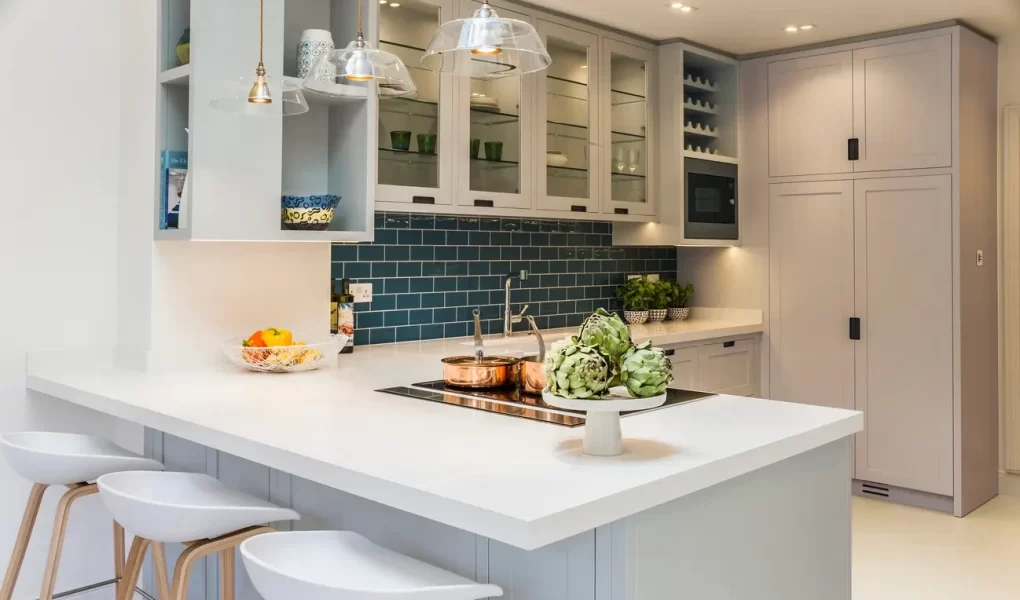Many people picture a single, open space filled with the aroma of home-cooked meals. Enter the wet kitchen and dry kitchen—two distinct concepts that cater to diverse culinary needs. Whether you’re an aspiring chef or a casual cook, understanding these two setups can help you make informed choices about your own cooking environment.
Definition of a Wet Kitchen

A wet kitchen is designed for heavy cooking and food preparation. It’s a space where tasks often involve water, such as washing vegetables, marinating meats, or simmering sauces, can be performed.
Typically equipped with additional plumbing fixtures, it allows for easy cleanup and efficient workflows. The presence of a sink is crucial in this setup.
Wet kitchens are often separate from the main cooking area, allowing cooks to manage messier tasks without disturbing the home’s overall aesthetic. They usually feature durable materials that can withstand moisture and heat.
This configuration caters well to those who frequently cook dishes requiring intense flavours or elaborate techniques—think curries or stir-fries! In essence, wet kitchens prioritise functionality over formality in their design approach.
Definition of a Dry Kitchen
A dry kitchen is designed primarily for cooking and food preparation. It focuses on a clean, organized space where appliances like ovens, stoves, and microwaves take center stage.
Typically found in modern homes, a dry kitchen often features sleek cabinetry and countertops made from durable materials. This space emphasises aesthetics alongside functionality.
Unlike wet kitchens, which handle messy tasks like washing or marinating, a dry kitchen keeps things tidy. It’s perfect for baking or quick meal prep without the hassle of excess moisture.
Storage plays an important role here as well. Dry kitchens are equipped with ample shelving and
Pros and Cons of a Wet Kitchen

A wet kitchen is designed for heavy cooking, making it ideal for those who love experimenting with flavours and techniques. Its primary advantage is its functionality. It allows messy tasks like frying and boiling without worrying about splatters ruining the rest of your home.
Another benefit is the efficient use of space. You can separate intense cooking from entertaining areas containing odours and smoke.
There are downsides to consider. Wet kitchens often require more ventilation, which can lead to higher energy costs if they are not properly managed.
Moisture buildup can make maintaining cleanliness challenging. Mold and mildew may become concerns if proper care isn’t taken only sometimes.
Depending on your home’s layout, creating a wet kitchen might take up valuable square footage that could serve other purposes. Balancing these pros and cons requires careful thought before making a decision.
Pros and Cons of a Dry Kitchen

A dry kitchen is often seen as the heart of a home. Its design typically focuses on aesthetics and functionality, creating an inviting space for cooking and entertaining.
One major advantage is versatility. You can use this area for culinary activities without worrying about excess moisture damaging surfaces or appliances, making it ideal for baking and meal prep.
There are downsides. A dry kitchen may need more specialised equipment than wet kitchens, like heavy-duty sinks or ventilation systems designed for frying and boiling.
Cleaning can also be a hassle if spills occur during food preparation. Without designated spaces to manage messes efficiently, you might constantly tidy up after meals.
Consider your cooking habits when weighing these pros and cons; they greatly influence whether a dry kitchen suits your lifestyle needs.
Factors to Consider When Choosing Between a Wet or Dry Kitchen
Space plays a crucial role when deciding between a wet and dry kitchen. Wet kitchens typically require more room for plumbing and storage. Assess your available area carefully before making a choice.
Next, think about your cooking habits. A wet kitchen might suit you better if you frequently mix elaborate meals or experiment with spices. On the other hand, if quick meals are your style, a dry kitchen could suffice.
Maintenance is another factor to consider. A wet kitchen can be messy and require frequent cleaning due to splashes and spills. Dry kitchens are easier to maintain but may lack some functionality needed for intensive cooking.
Aesthetic preferences. A well-designed dry kitchen often serves as an inviting gathering space while still being practical for meal prep. Choose what feels right for your home’s vibe and lifestyle needs.
Conclusion
Choosing between a wet and dry kitchen ultimately comes down to your lifestyle, cooking habits, and space considerations. A wet kitchen might be your best friend if you love cooking with spices, oils, and water-heavy dishes. It allows for messy cooking without worrying about splashes or spills ruining the aesthetics of your main living area.
On the other hand, if you prefer quick meals or entertaining guests in an open layout, a dry kitchen could suit you better. It offers convenience and can serve as a functional meal prep space and a stylish social gathering area.
Think about how often you cook large meals versus simple dishes. You may enjoy hosting, or you may be more comfortable whipping up dinner alone during quiet evenings at home. Each option has its benefits and drawbacks.
Assess your needs carefully before making this important decision for your home. Whether you’re drawn to the practicality of utility-focused spaces or the elegance of modern designs, there’s no right answer.




